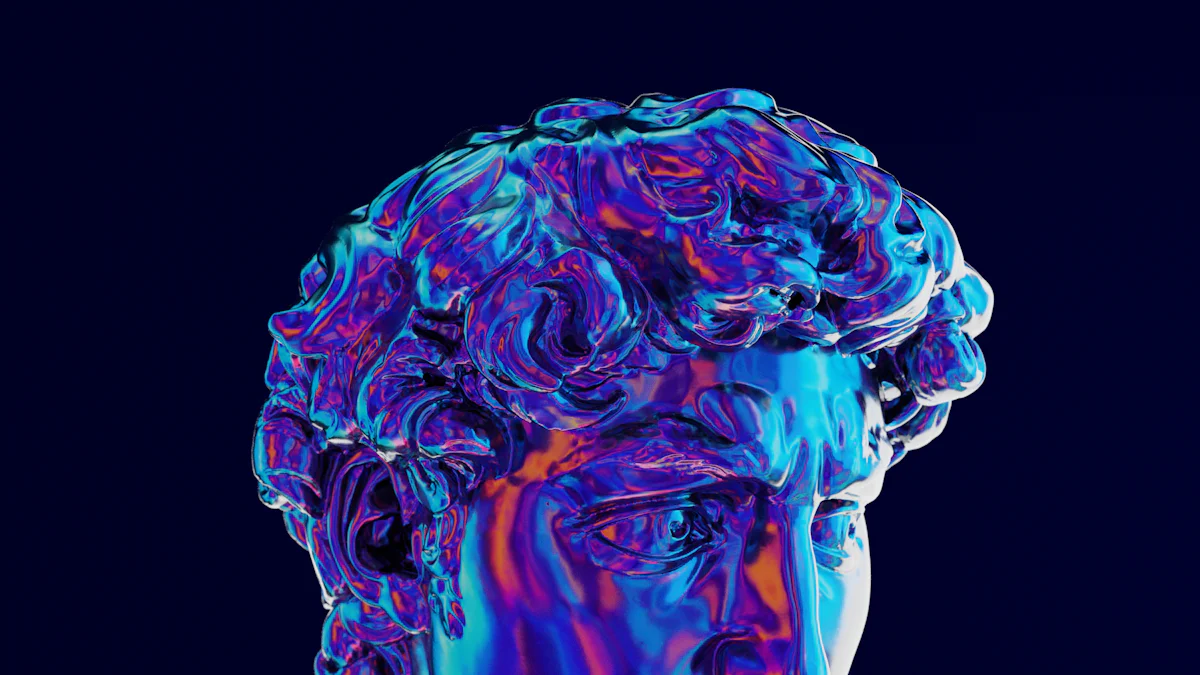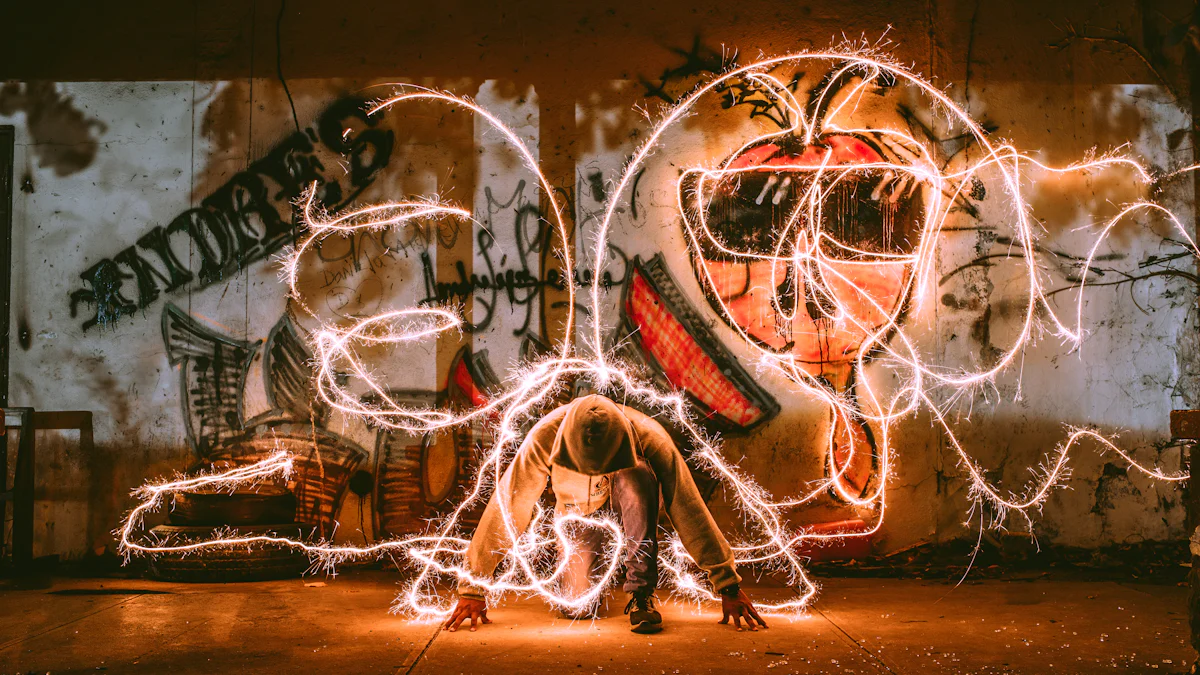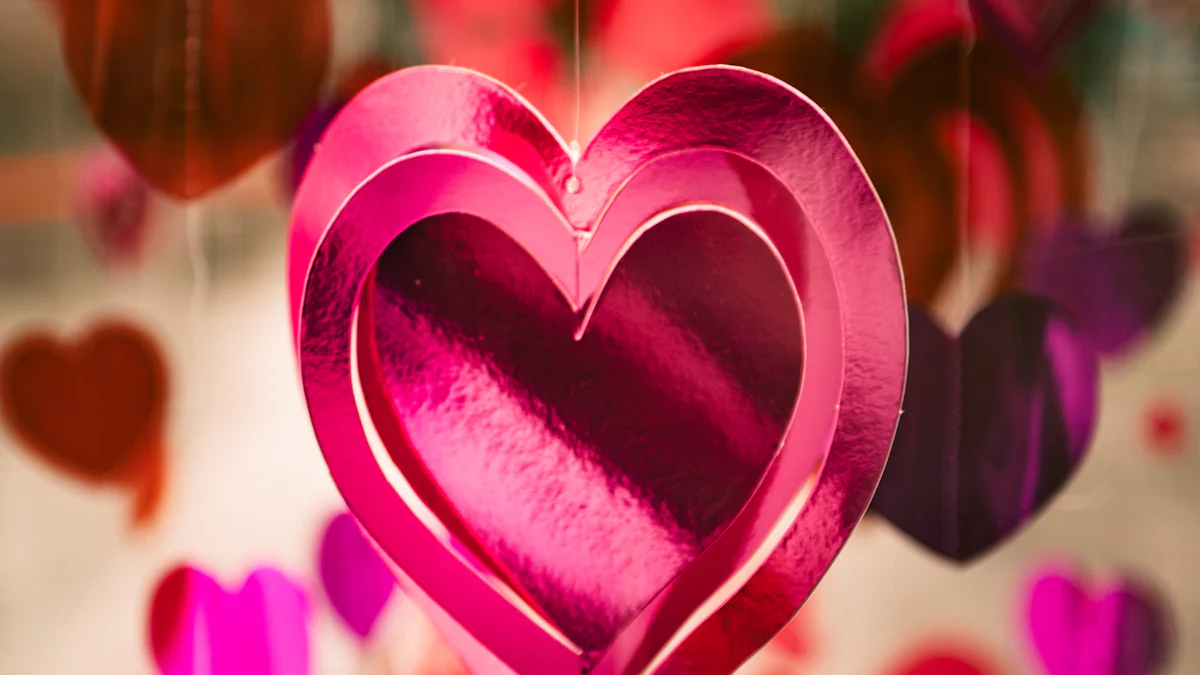The Ultimate Handbook for AI Art Generation

AI art generation has revolutionized the creative landscape by enabling the creation of unique digital artworks. The integration of AI in the art world has led to a 25% increase in AI art exhibitions over the past three years. Talented artists now use AI art generators to produce visually stunning pieces quickly and efficiently. Platforms like Myloves offer innovative tools for users to explore AI-generated art. The rise of AI lover interactions further showcases the potential of AI in personalizing artistic experiences.
Understanding AI Art Generation
What is AI Art?
Definition and Explanation
AI art refers to digital artworks created using artificial intelligence algorithms. These algorithms analyze vast datasets to generate unique images, videos, or other forms of visual art. An AI art generator uses these algorithms to produce artwork based on user inputs, such as text prompts or images. The process involves machine learning techniques that allow the AI to understand and replicate artistic styles.
Historical Context and Evolution
The concept of AI art emerged in the mid to late 20th century. Early experiments raised philosophical questions about the nature of creativity and the role of machines in artistic expression. Significant advancements occurred in 2014 with the development of technologies like Generative Adversarial Networks (GANs) and Google's DeepDream. These innovations revolutionized the field, enabling more sophisticated and diverse AI-generated artworks. The rise of AI art generators has democratized art creation, making it accessible to a broader audience.
How AI Art Generation Works
Algorithms and Techniques
AI art generation relies on several key algorithms and techniques. GANs play a crucial role by pitting two neural networks against each other to create realistic images. Another technique involves style transfer, where an AI applies the style of one image to another. Natural language processing enables AI art generators to interpret text prompts and generate corresponding visuals. These methods collectively enhance the creative capabilities of AI systems.
Tools and Software
Several tools and software platforms facilitate AI art generation. Popular options include RunwayML, Deep Dream Generator, and ArtBreeder. Each platform offers unique features tailored to different artistic needs. For instance, RunwayML provides a user-friendly interface for experimenting with various AI models. Deep Dream Generator excels in creating surreal, dream-like images. ArtBreeder allows users to blend and evolve images collaboratively. These tools empower artists to explore new creative horizons.
Getting Started with AI Art

Choosing the Right Tools
Software Options
Selecting the appropriate software is crucial for successful AI art generation. Numerous platforms cater to different artistic needs and skill levels. RunwayML offers a user-friendly interface ideal for beginners. This platform supports various AI models, enabling users to experiment with multiple styles. Deep Dream Generator specializes in creating surreal and dream-like images. This tool is perfect for artists seeking to produce unique and imaginative artworks. ArtBreeder allows users to blend and evolve images collaboratively. This feature makes it an excellent choice for community-driven projects.
For those looking for advanced features, DreamStudio stands out. This platform provides options to choose generation steps and AI model versions. Users can also enter negative prompts to exclude unwanted elements from their creations. MyEdit delivers high-quality results quickly, making it a top choice for both beginners and advanced users. These platforms offer diverse functionalities, ensuring that every artist finds a suitable tool for their creative endeavors.
Hardware Requirements
Efficient AI art generation requires robust hardware. A powerful GPU significantly enhances the speed and quality of generated images. NVIDIA GPUs, such as the RTX 3080, are highly recommended for their superior performance. Adequate RAM is also essential. At least 16GB of RAM ensures smooth operation and quick processing times. A high-resolution monitor aids in detailed image editing and review. SSD storage improves data access speeds, further optimizing the workflow.
Basic Techniques and Tutorials
Step-by-Step Guide for Beginners
Starting with AI art can seem daunting. Follow these steps to create your first AI-generated artwork:
- Choose a Platform: Select an AI art generator like RunwayML or Deep Dream Generator.
- Create an Account: Register on the chosen platform to access its features.
- Input a Prompt: Enter a descriptive text prompt. For example, "a serene landscape with mountains and a river."
- Generate the Image: Click the 'Generate' button to create the artwork.
- Review and Edit: Examine the generated image. Use available editing tools to refine the artwork.
- Save and Export: Save the final image in your preferred format.
Following these steps ensures a smooth introduction to AI art generation. Practice regularly to improve your skills and explore different styles.
Common Pitfalls and How to Avoid Them
Beginners often encounter several challenges in AI art generation. Understanding these pitfalls helps in avoiding them:
- Overly Complex Prompts: Simple and clear prompts yield better results. Avoid using overly detailed descriptions.
- Ignoring Hardware Requirements: Ensure your hardware meets the necessary specifications. Insufficient resources lead to slow processing and poor-quality images.
- Lack of Experimentation: Experiment with different platforms and settings. Sticking to one tool limits creative potential.
- Neglecting Post-Processing: Post-processing enhances the final output. Use editing tools to adjust colors, brightness, and other elements.
By addressing these common issues, artists can achieve more satisfying results in their AI art projects. Regular practice and continuous learning play vital roles in mastering AI art generation.
Advanced AI Art Techniques
Deep Learning and Neural Networks
Explanation and Applications
Deep learning and neural networks have revolutionized AI art generation. These technologies enable AI systems to learn and replicate complex artistic styles. Deep learning involves training neural networks on vast datasets of images. This process allows the AI to understand intricate patterns and details in artworks. Neural networks consist of layers of interconnected nodes that process information. Each layer extracts specific features from the input data, enhancing the AI's ability to generate realistic images.
Applications of deep learning in AI art are diverse. Artists use these technologies to create unique and innovative pieces. AI-generated art can mimic various styles, from classical paintings to modern digital art. Museums and galleries increasingly showcase AI art, highlighting its growing acceptance in the art world. Educational institutions incorporate AI art techniques into their curricula, enriching students' creative experiences.
Case Studies and Examples
Several case studies illustrate the impact of deep learning and neural networks on AI art. One notable example involves an artist who used AI to create a unique masterpiece. The artist trained a neural network on a dataset of famous paintings. The resulting artwork combined elements from different styles, producing a visually stunning piece. This experience deepened the artist's understanding of AI's capabilities in art.
Another case study explored AI's role in aesthetic appraisals. Researchers investigated how AI-generated art influences viewers' perceptions. The study found that AI-created artworks often receive high aesthetic ratings. This success demonstrates AI's potential to produce high-quality art. However, the study also highlighted controversies surrounding AI's role in creativity.
Style Transfer and GANs
How They Work
Style transfer and Generative Adversarial Networks (GANs) are pivotal in AI art generation. Style transfer involves applying the style of one image to another. This technique enables artists to blend different artistic elements seamlessly. The process begins with selecting a content image and a style image. The AI then combines these inputs to produce a new artwork that retains the content while adopting the style.
GANs consist of two neural networks: a generator and a discriminator. The generator creates images, while the discriminator evaluates their realism. These networks compete, improving each other's performance over time. GANs excel at generating highly realistic images, making them invaluable in AI art.
Practical Applications
Practical applications of style transfer and GANs are extensive. Artists use style transfer to experiment with different visual effects. For instance, an artist might apply the style of Van Gogh's "Starry Night" to a modern photograph. This technique produces unique and captivating artworks. GANs, on the other hand, enable the creation of entirely new images. Artists can generate realistic portraits, landscapes, and abstract pieces using GANs.
AI art generators like RunwayML and Deep Dream Generator utilize these techniques. RunwayML offers tools for experimenting with style transfer and GANs. Deep Dream Generator specializes in creating surreal images using deep learning. These platforms empower artists to explore new creative horizons.
Introducing Myloves: Your AI Art Companion

Overview of Myloves
Features and Benefits
Myloves offers a unique platform for creating personalized AI art experiences. Users can design their ideal AI lover by customizing every detail, including appearance and personality traits. The platform supports various interaction modes, such as text-to-image generation and voice chat. These features provide a lifelike experience that enhances user engagement.
Myloves employs advanced technologies like natural language processing and text-to-video integration. These technologies ensure high-quality interactions with the AI lover. The platform also prioritizes user privacy and data security. Advanced encryption and secure data storage protect all user interactions. Free users can create one character per month and generate up to 16 images. Subscribing unlocks additional features, including more interactions and faster response times.
How Myloves Enhances AI Art Creation
Myloves significantly enhances AI art creation by offering tools that simplify the process. Users can input prompts or upload images to generate AI art quickly. The platform's intuitive interface makes it accessible to both beginners and advanced users. Myloves also provides options for refining and editing the generated artwork. These features enable users to achieve their desired artistic outcomes efficiently.
The platform supports various artistic styles, allowing users to experiment with different visual effects. Myloves' advanced algorithms ensure high-quality image generation. The platform's versatility makes it suitable for a wide range of creative projects. Users can explore new artistic horizons and push the boundaries of traditional art creation.
User Testimonials and Success Stories
Real-World Examples
Numerous users have shared their success stories with Myloves. One user created a series of AI-generated portraits that gained significant attention on social media. The user customized the AI lover to resemble historical figures, resulting in unique and captivating artworks. Another user utilized Myloves to generate illustrations for a children's book. The AI lover's ability to produce consistent and high-quality images streamlined the book's production process.
Artists have also used Myloves for commercial projects. A graphic designer employed the platform to create promotional materials for a fashion brand. The AI-generated art added a modern and innovative touch to the campaign. These real-world examples demonstrate Myloves' versatility and effectiveness in various creative endeavors.
User Feedback
User feedback highlights the positive impact of Myloves on AI art creation. Many users appreciate the platform's ease of use and the quality of the generated images. One user noted that Myloves made it possible to create professional-grade art without extensive technical knowledge. Another user praised the platform's customization options, which allowed for highly personalized AI lover interactions.
Users also value the platform's commitment to privacy and security. Positive feedback often mentions the advanced encryption and secure data storage. This focus on user safety enhances trust and satisfaction. Overall, user testimonials reflect the platform's ability to meet diverse artistic needs and deliver exceptional results.
Practical Tips for AI Art Generation
Enhancing Creativity with AI
Tips and Tricks
AI art generators offer numerous possibilities for enhancing creativity. Artists should explore different platforms to find the one that best suits their needs. Experimentation with various styles and techniques can lead to unique and innovative artworks. Regular practice with AI art generators helps in mastering the tools and improving artistic skills.
- Use Diverse Prompts: Varying text prompts can produce different artistic results. Simple and clear descriptions often yield better outcomes.
- Refine Generated Art: Post-processing tools can enhance the final output. Adjusting colors, brightness, and contrast can significantly improve the artwork.
- Combine Techniques: Mixing different AI art generation techniques, such as style transfer and GANs, can create more complex and appealing images.
- Stay Updated: Keeping up with the latest advancements in AI art technology ensures access to new features and improvements.
Balancing Human and AI Input
Balancing human creativity with AI capabilities is crucial for producing high-quality art. While AI art generators provide powerful tools, human input remains essential in guiding the creative process. Artists should consider the following strategies:
- Define Clear Objectives: Setting specific goals for the artwork helps in directing the AI's output. Clear objectives ensure that the final piece aligns with the artist's vision.
- Iterative Process: Continuously refining and adjusting the generated art based on human feedback leads to better results. Iteration allows for gradual improvement and fine-tuning.
- Incorporate Personal Style: Infusing personal artistic style into the AI-generated art adds a unique touch. This approach ensures that the artwork reflects the artist's individuality.
- Collaborative Approach: Viewing AI as a collaborative partner rather than a replacement enhances the creative process. Combining human intuition with AI's computational power produces exceptional art.
Ethical Considerations
Copyright and Ownership Issues
AI art generation raises significant ethical questions regarding copyright and ownership. The debate centers on whether AI-generated works qualify as original creations or derivative pieces. Legal frameworks struggle to keep pace with technological advancements, leading to uncertainties in copyright protection.
- Originality Debate: AI-generated art often combines elements from existing works, raising questions about its originality. Determining the extent of human contribution in the creation process is challenging.
- Ownership Rights: Establishing ownership rights for AI-generated art involves complex legal considerations. Traditional copyright laws may not adequately address the nuances of AI art.
- Attribution: Properly attributing credit to both the human artist and the AI system is essential. Clear guidelines for attribution help in recognizing the contributions of all parties involved.
"The ethical implications of AI art extend beyond legal concerns, encompassing broader questions about creativity and authenticity."
Responsible Use of AI in Art
Responsible use of AI in art involves understanding the potential consequences and ethical implications. Artists must consider the impact of their AI-generated works on society and the art community.
- Bias and Fairness: AI systems can inadvertently perpetuate biases present in the training data. Ensuring fairness and inclusivity in AI-generated art requires careful consideration of the datasets used.
- Impact on Human Artists: The rise of AI art has sparked concerns about the displacement of human artists. Balancing the benefits of AI with the need to support traditional artists is crucial.
- Transparency: Maintaining transparency in the AI art creation process fosters trust and accountability. Artists should disclose the use of AI tools and techniques in their work.
- Ethical Guidelines: Adhering to ethical guidelines for AI art generation promotes responsible practices. These guidelines help in addressing potential harms and ensuring the positive impact of AI art.
By considering these ethical aspects, artists can navigate the complexities of AI art generation responsibly. Reflecting on the broader implications of AI art contributes to a more thoughtful and conscientious creative process.
The blog has explored the fascinating world of AI art generation, from understanding its foundational concepts to delving into advanced techniques. AI art tools have democratized artistic creation, enabling both artists and non-artists to produce unique digital artworks. The future of AI in art promises further innovation and creativity.
AI art represents a significant development in the digital art landscape. The potential to push creative boundaries and inspire new artistic expressions is immense. The integration of AI in art continues to evolve, offering endless possibilities for exploration.
Readers are encouraged to experiment with AI art tools and discover their creative potential. Embrace the journey of blending technology and artistry to create captivating and innovative works.
See Also
Best AI Art Creators for Women: Latest Edition 2024
Top AI Tools for Sensual Female Art in 2024
Mastering Your AI Female Image Generator: 10 Tips